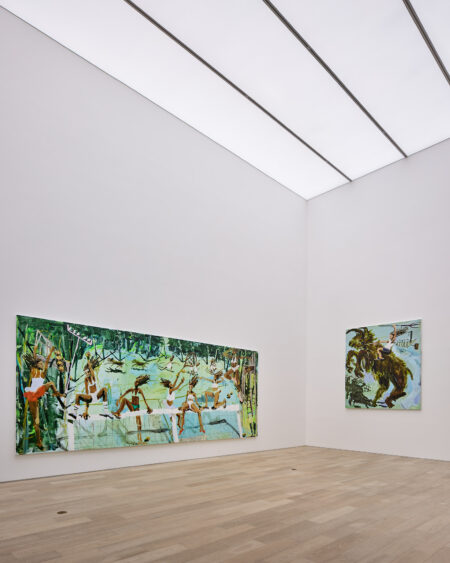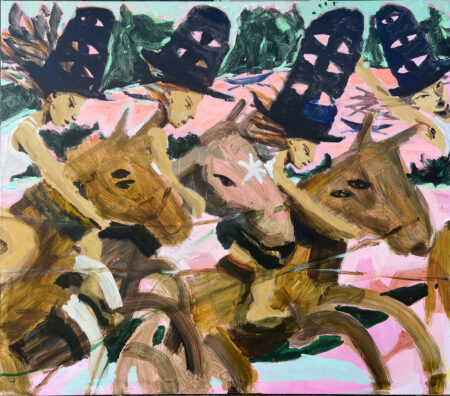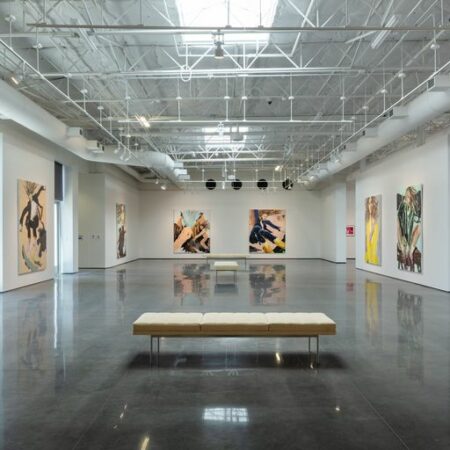JENS SONERYD
“NOPLACIA was once my name,
That is, a place where no one goes.”
Thomas More
The white colour in the paintings of Mie Olise’s Between the Stratum and the Unstable is not only used to evoke arctic landscapes covered in snow, but also to make the white spots return to our maps.
The white spots enable us to leave the actual behind and to enter the possible. It sets us in a state of wonder. It is the locus for terra incognita, the geography of utopia.
The word “utopia” is compounded by the Greek words “ou”(non) and “topos”(place) to signify a place that does not exist.
A non-site like utopia cannot be found in the present. It belongs to the past or the future and must therefore be located outside the borders of the actual.
Throughout history utopia has been sought at various places in space as well as in time. Archaeologists have searched for utopia in the ruins of ancient times. Sailors and explorers have searched on distant islands and under the sea.
Utopia has been described in detail in fictions as well as in philosophical principles and has been depicted by artists such as Pieter Bruegel and Hieronymus Bosch, but still it has not been found.
The philosopher Paul Ricœr claimed that we cannot imagine a society without utopias, since it would be a society without goal. It might therefore be a terrible mistake to abandon utopia simply because we cannot reach it.
Maybe utopia is not meant to be reached.
Mie Olise do not depict utopia as a final destination, as the end of our journey, but rather as a point of departure for thoughts and imaginations.
Between the Stratum and the Unstable is a temporary harbour that borders to the unknown, where dazzle ships, canoes and pirate ships are being tied while waiting to continue their journeys. It is a harbour made of paintings, wooden sculptures and weavings that let distant places and times coincide.
The exhibition is a place where memories of the past and dreams of the future meet.
Text: Jens Soneryd


